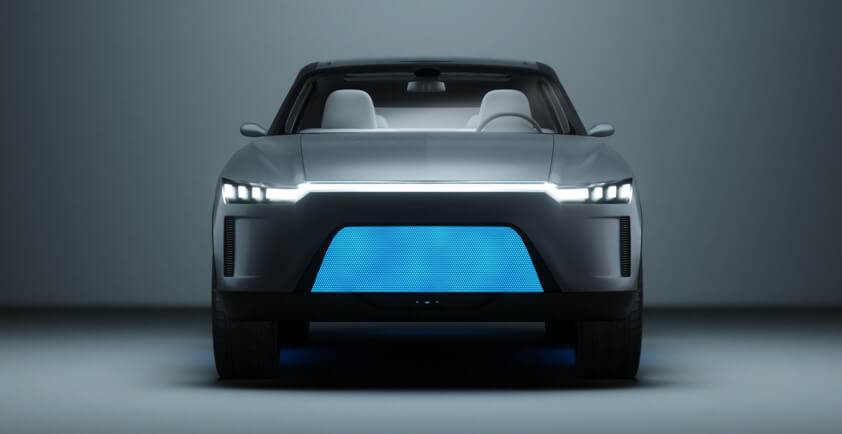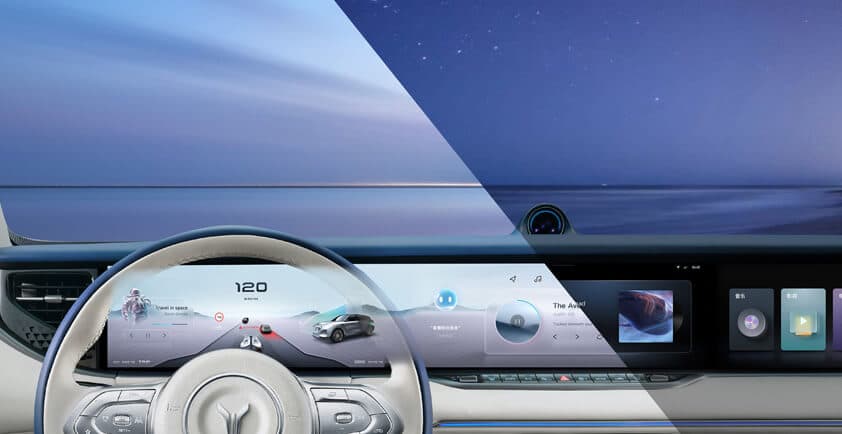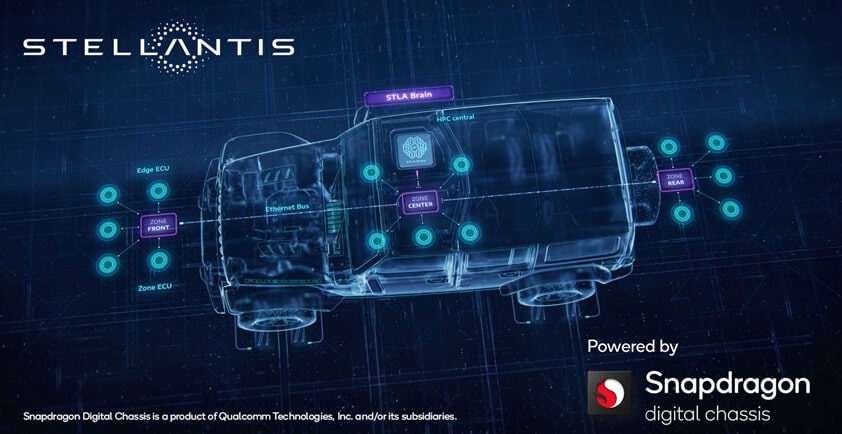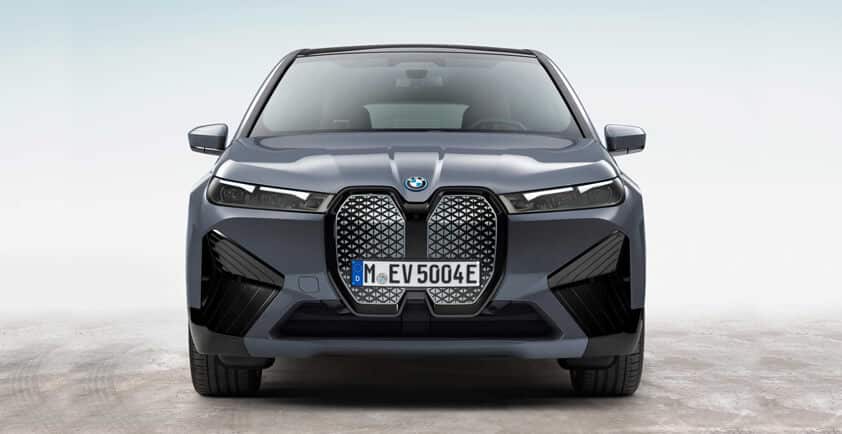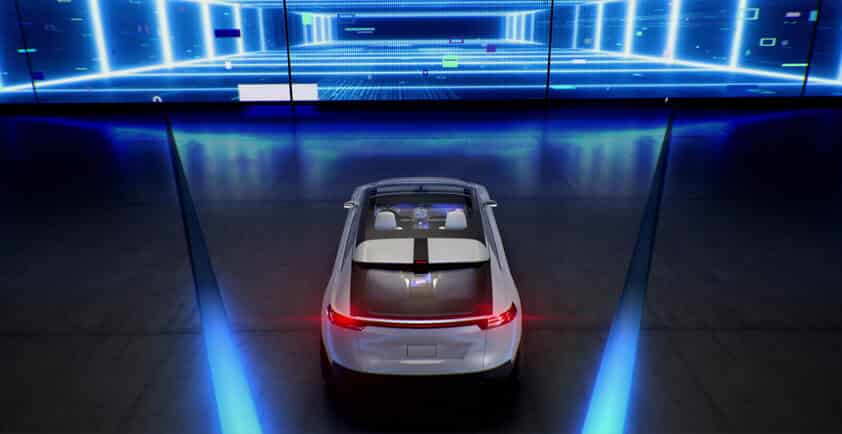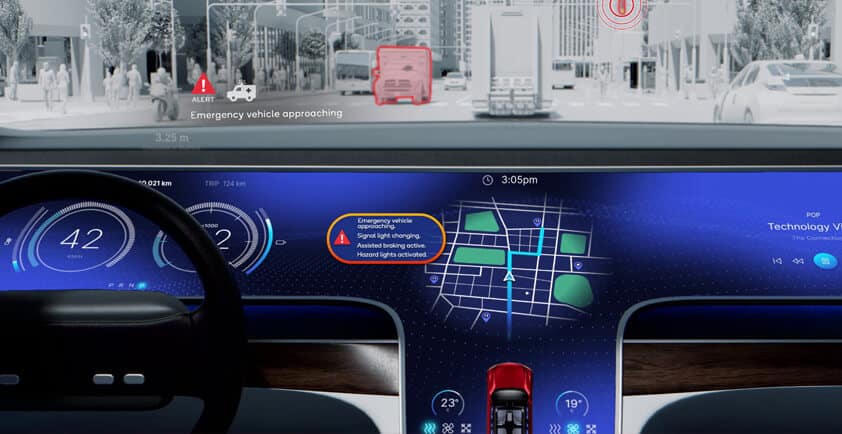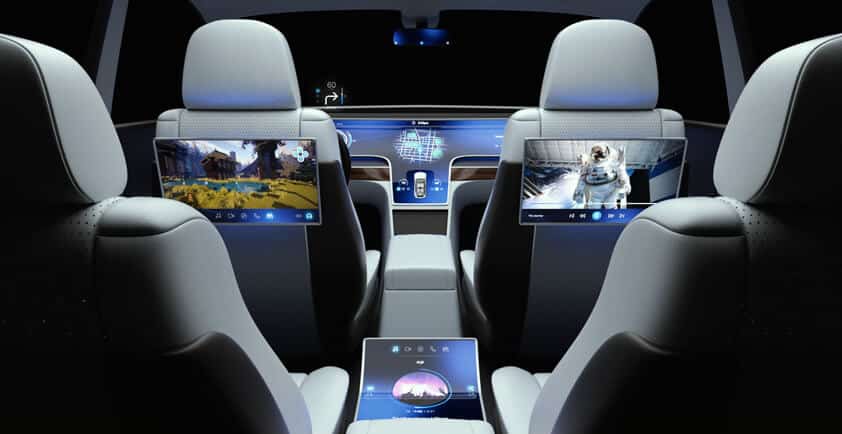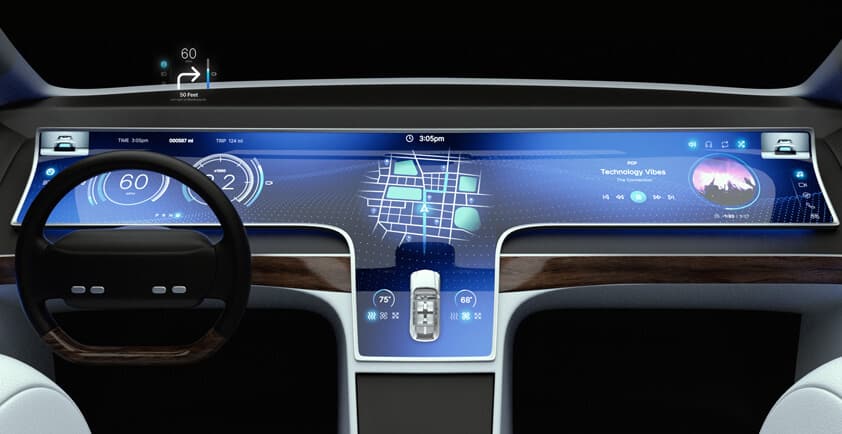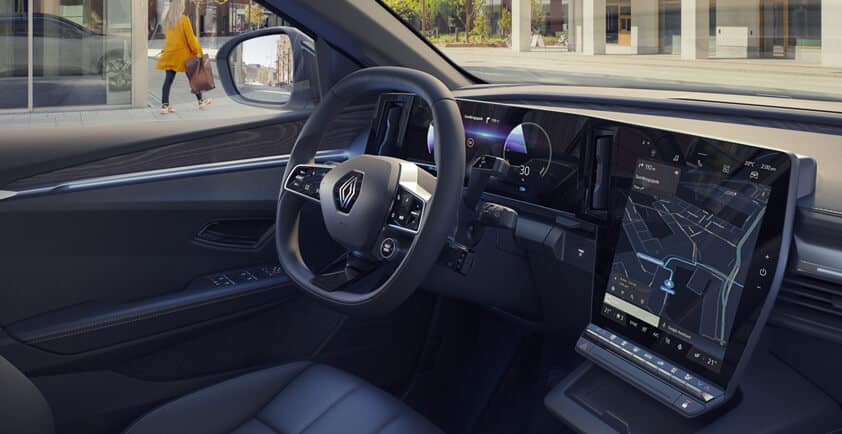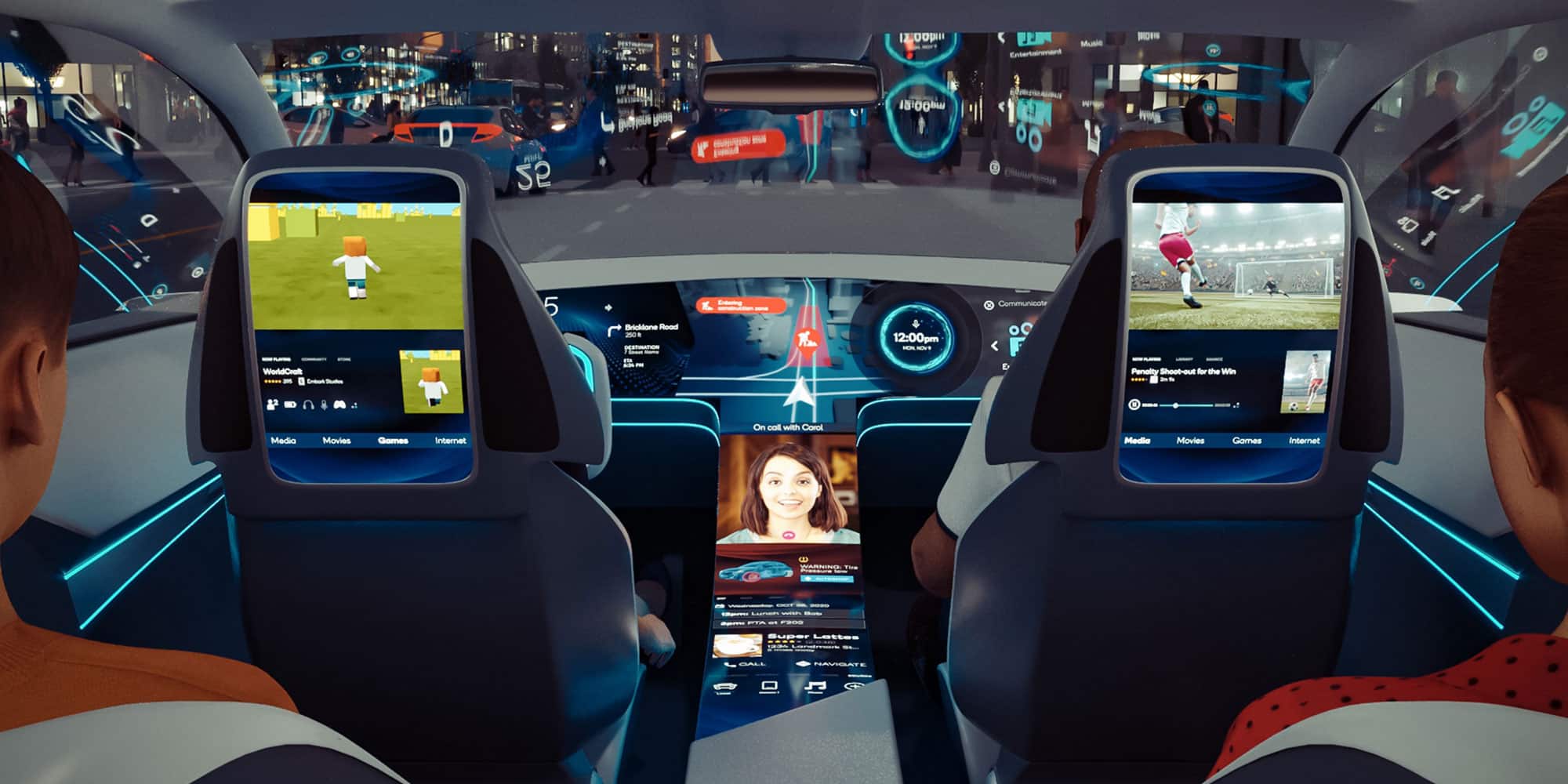
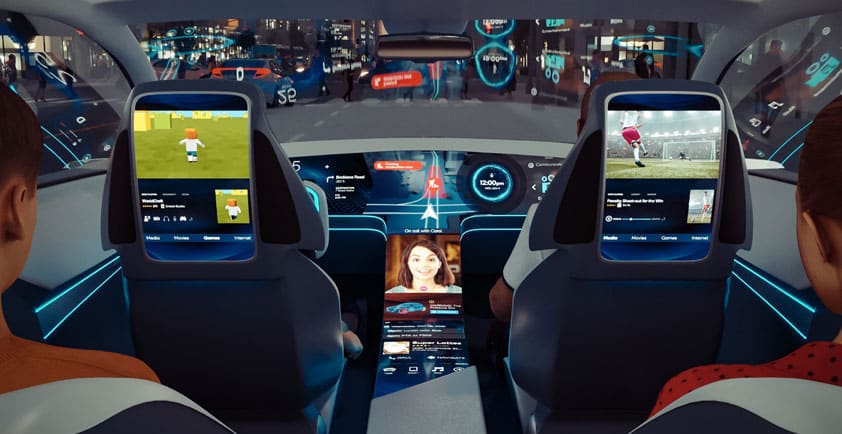
QUALCOMM REVOLUTIONIZES THE DIGITAL COCKPIT WITH 4TH GENERATION SNAPDRAGON AUTOMOTIVE COCKPIT PLATFORMS
>> 4th Generation Automotive Cockpit Platforms Usher in New Era of Enhanced, Premium Driving Experiences for Next Generation Vehicles
Qualcomm Technologies, Inc. today introduced at the company’s virtual Automotive Redefined: Technology Showcase its next generation of digital cockpit solutions with the 4th Generation Qualcomm® Snapdragon™ Automotive Cockpit Platforms. The automotive digital cockpit is evolving to a zonal electronic/electrical (E/E) compute architecture, driven by the complexity, cost and need for a central compute consolidation. The 4th Generation Snapdragon Automotive Cockpit Platforms are engineered as a homogenous and multipurpose solution to address this transition to a zonal architecture, serving as a central hub for high-performance compute, computer vision, artificial intelligence (AI) and multi-sensor processing with a flexible software configuration to address the compute, performance and functional safety needs for that zone or domain. Fully scalable, the new digital cockpit platforms support all three Snapdragon Automotive performance tiers, ranging from Performance, Premiere to Paramount, for the entry level, mid-tier and super computing platforms, respectively. Utilizing 5nm processing technology, the new digital cockpit platforms provide automakers with the one of the highest performance system-on-chip (SoC), equipped to meet the user experiences of the next generation cockpit with a low-power and thermal profile, as well as Qualcomm® Car-to-Cloud with Soft SKU capabilities, allowing the end-consumer to have the latest features and capabilities through over-the-air (OTA) updates post-deployment and throughout the lifecycle of the vehicle. With its enhanced capabilities, the new digital cockpit platforms are now one of the most comprehensive solutions in the automotive industry, designed to provide superior in-vehicle user experiences, as well as safety, comfort and reliability, raising the bar for digital cockpit solutions in the automotive industry.
The new digital cockpit platforms are designed to provide software scalability and flexibility with support for several high-level and real-time operating systems in hypervisor and container software configurations. This supports multiple engine control units (ECUs) and domain consolidation, including cluster and cockpit, augmented reality heads-up-display (AR-HUD), infotainment, rear seat displays, mirror replacement (e-Mirror) and in-cabin monitoring services. It also provides video processing capabilities to integrate drive recording and surveillance functionality. These new platforms use the same software architecture and framework across all tiers, reducing development complexity and commercialization time, while minimizing maintenance costs for automakers for a harmonized user experience independent of the vehicle tier.
Building on Qualcomm Technologies’ continued success in developing industry-leading automotive solutions with the 3rd Generation Qualcomm® Snapdragon™ Automotive Cockpit Platforms -- which will be featured in production vehicles across the globe this year -- the 4th Generation Snapdragon Automotive Digital Cockpit Platforms feature enhanced graphics, multimedia, computer vision and AI capabilities designed to provide an optimized, contextually aware and constantly adaptive cockpit system that can evolve to its passengers’ preferences. The new platforms utilize the 6th generation Qualcomm® Kryo™ Central Processing Unit (CPU), Qualcomm® Hexagon™ Processor, multi-core Qualcomm® AI Engine, 6th generation Qualcomm® Adreno™ Graphics Processing Unit (GPU) and Qualcomm® Spectra™ Image Signal Processor (ISP), to provide a true platform on chip. The various building blocks include:
> High Performance Compute: with the 6th generation Kryo CPU is designed to provide the power and performance needed to address the compute needs of next generation automotive digital cockpits and the support for multiple virtual machines to provide the isolation needed for domain consolidation.
> Rich Graphics and Multimedia Support for Immersive In-Vehicle Experiences: with on-demand media consumption and over the air application content expanding, next generation vehicles are featuring several high-resolution displays for media, navigation and high-definition clusters, while still requiring several lower resolution displays, such as pillar or mirror displays with associated safety requirements. 4th generation platforms optimize the latest generation of the Adreno GPU for high performance, low power graphics, video and display processing units, and can render multiple high-resolution displays, providing vehicle occupants with superior 3D graphic visualization to enjoy premium entertainment content across different displays. Passengers can now enjoy a shared content experience with other occupants or enjoy the privacy of their own high resolution display and media consumption. The platforms also feature enhanced pixel processing pipeline to support multiple high-definition camera inputs, which are then stitched and processed to provide either an in-car or around the car visualization. Additionally, they are designed to support up to 16 camera inputs through serial interfaces and additional cameras through ethernet interfaces. The performance and safety enhancements to the visual and multimedia processing units are designed to provide the cockpit of the future with a comprehensive media experience that is safety-conscious and comfortable for the occupants.
> Highly Intuitive AI Experiences: utilizes the cutting-edge AI Engine for driver and passenger personalization, in-car virtual assistance, natural voice control, language understanding, driver monitoring and occupant presence detection and adaptive human machine interfaces. The AI engine provides a system capable of constant learning and adapting to the occupant’s preferences, limited not only to media or infotainment content but also to vehicle controls such as seat and mirror positioning, HVAC and per seat personalized climate bubbles, audio content and volume preferences and providing the driver with an interface that is attuned to his/her preferences and the vehicle ambience.
> Contextual Awareness and Safety enhancements for intelligent and distraction free driver assistance systems, including in-cabin monitoring, child and occupant detection and ultra-HD surround view monitoring with Object Detection for roadside safety. Using the AI Engine and ISP blocks, the platforms are designed to also allow for in-cabin and external camera integration, providing the infrastructure to ensure the safety and comfort of the occupants. The safety infrastructure extends across the key compute blocks and is augmented by an integrated safety manager to provide the higher automotive safety integrity levels (ASIL) needed for domain consolidation.
> Immersive Audio: designed to provide premium audio experiences, including personalized multi-audio zones customized for each user, crystal clear in-car communication and active noise and echo cancellation with engine and road-noise noise suppression capabilities delivered by a powerful audio subsystem integrated in the 4th generation platforms.
> Connectivity Support: pre-integrated support for Wi-Fi 6 and Bluetooth® 5.2, offering premium wireless in-car experiences including hotspot, high speed gaming, and phone mirroring technologies such as wireless Android Auto™.
> Telematics and C-V2X Support: pre-integrated support for Qualcomm® Snapdragon™ Automotive 5G Platforms with integrated C-V2X technology, providing for the high bandwidth pipeline needed for seamless media streaming, OTA updates, and multi-gigabit upload and download capabilities.
> Software Support: a scalable software framework with multiple Board Support Package (BSP) configurations to support:
>> High-level Operating Systems (HLOS) and Application Frameworks & Distributions: Android Auto Embedded and Google Automotive Services (GAS); Linux, Yocto and Automotive Grade Linux (AGL), Banma powered by AliOS, webOS Auto and other AOSP distributions
>> Real-Time Operating Systems (RTOS): Blackberry® QNX® and QNX® OS for Safety; Green Hills Software INTEGRITY® and u-velOSity™; and WITTENSTEIN high integrity systems SAFERTOS®
>> Hypervisors: Blackberry QNX® Hypervisor and QNX Hypervisor for Safety, Green Hills Multivisor® and u-velOSity™; OpenSynergy COQOS Hypervisors
>> Linux Containers (LXC and other container technologies), including the ability to support combinations of virtualization and containerization for memory, performance, functional safety and isolation needs in mixed criticality architectures
Qualcomm Technologies’ integrated automotive platforms are driving leadership and growth across telematics, infotainment and in-car connectivity, with an order pipeline of more than $8 billion. Qualcomm Technologies has secured infotainment and digital cockpit wins with 20 of the 25 global automaker brands. Qualcomm Technologies continues to work with numerous automakers and Tier-1 suppliers to bring next generation technologies to vehicles.
“The digital cockpit has become synonymous with the ever-growing need for automakers to create a unique, differentiated and branded experience for their customer” said Nakul Duggal, senior vice president & GM, automotive, Qualcomm Technologies, Inc. “With our 4th Generation Snapdragon Automotive Cockpit Platforms, we strive to deliver the industry’s most advanced digital cabin solutions and aim to reinvent the driver, passenger and rear seat entertainment and contextual awareness experience, while also addressing the automakers’ shift to zonal compute architectures with the fusion of compute, performance, AI and safety. We intend to continue empowering automakers to scale these powerful automotive cockpits across a diversity of vehicle segments and help automakers democratize access to advanced infotainment technology that makes each driving or riding experience safer, more comfortable and more personal.”
The new digital cockpit platforms will target start of production (SOP) in 2022. The broad automotive ecosystem can evaluate, demonstrate and develop solutions with the 4th Generation Qualcomm® Snapdragon™ Automotive Development Platform (ADP), which is expected to be available in the second quarter of 2021 (Q2’21).
